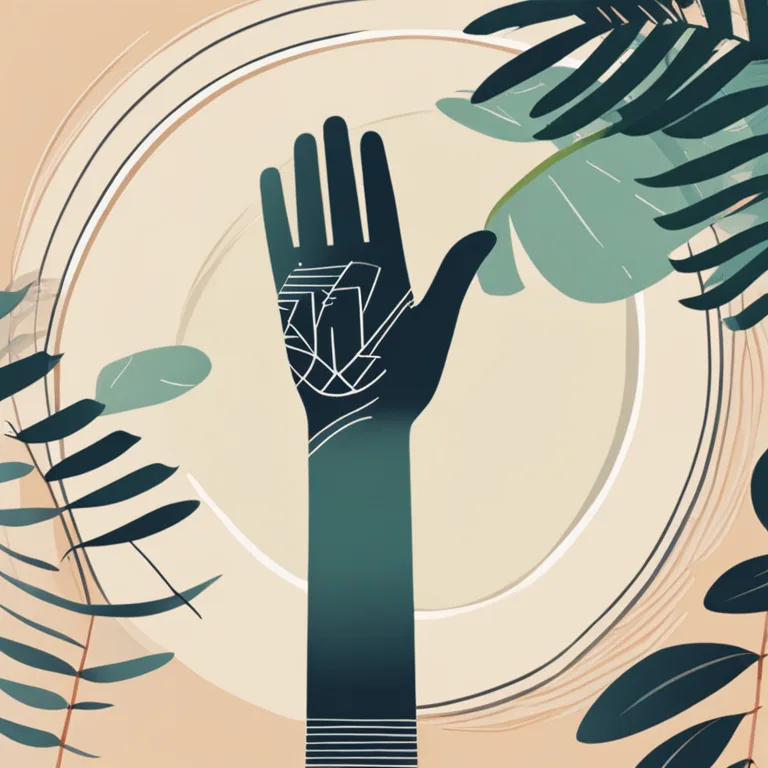
The Genesis of Palm Lines: A Detailed Insight
Discover how palm lines are formed and what factors influence their unique patterns on our hands.
article by Nora Pennington
Introduction to Palm Lines
Palmistry, or chiromancy, remains a subject of fascination due to its claimed ability to reveal insights about an individual’s personality and life path through the study of the palm. At the heart of palmistry are the palm lines, unique formations inscribed on each person's hand. These lines are believed to change over time, reflecting individual experiences, personal growth, and alterations in lifestyle or thinking. Understanding how these lines are formed and what influences them takes us to the intersection of genetics, developmental biology, and perhaps a hint of mystique.

The Science Behind Palm Line Formation
The formation of palm lines, medically referred to as palmar flexion creases, begins early in the womb. Around the 12th week of gestation, as the fetus starts actively moving its hands, the skin on the palm starts to develop these lines. These creases are necessary for the flexibility and movement of the hand, allowing the skin to stretch and compress during hand motions. While genetics play a critical role in the underlying patterns, environmental factors within the womb can also affect their layout. This affirms the uniqueness of each individual's palm lines, serving as a personal identifier, much like fingerprints.

Influences on Palm Line Variability
The variability in palm lines among individuals can be attributed to several factors. Genetics dictate the overall blueprint, while intrauterine movement patterns refine their design. However, even identical twins, who share the same genetic makeup, can possess different palm lines due to their independent movements and positions in the womb. Furthermore, as we grow, the lines deepen and may change slightly, reflecting our unique interactions with the environment and possibly the impact of our health on our skin's elasticity.

Palmistry and Palm Line Interpretation
In the practice of palmistry, significant lines such as the heart line, head line, life line, and fate line are analyzed for their lengths, depths, and intersections, with each purportedly offering different insights into an individual’s life. While the science of palmistry is not endorsed by the scientific community, it persists as a cultural and spiritual practice in many societies. Adherents believe that as one's life circumstances and choices evolve, so may the lines on their palms, symbolically reflecting life changes.
Modern Research and Future of Palm Lines
With advances in dermatoglyphics (the study of the pattern of epidermal ridges on the fingers and palms), researchers continue to investigate the link between palm lines and various medical conditions. Digital imaging technology allows for a non-invasive and detailed analysis of these lines, leading to a better understanding of their development and potential health indicators. In the coming years, we may witness the integration of AI and palm analysis for more personalized predictive models in health and personality assessments.
Conclusion and Reflection
Whether viewed through the lens of science or the realm of mysticism, palm lines undoubtedly embody a narrative of personal identity and life experiences. While palmistry positions these lines as carriers of significant personal truths, science meticulously deciphers their formation as a natural aspect of human biology. The enthrallment with palm lines, it seems, lies in their blending of empirical development and the enchantment behind their possible meanings.
Published: 1/5/2024
Modified: 1/5/2024
More predictions
Come back here soon to learn more about yourself and your future


The Sun Line in Palmistry: A Ray of Personal Brilliance
Discover the significance of the Sun Line in palmistry and how it reflects your potential for prosperity, creativity, and fame in this insightful article.


The Essence of Palmistry: A Guide to Hand Analysis
Delve into the world of palmistry, the ancient practice of interpreting palms to reveal personal insights and future paths.


The Dynamic Nature of Palm Lines Explored
Discover why palm lines can change over time, delving into the science behind these shifts and what they might signify in the realm of palmistry.